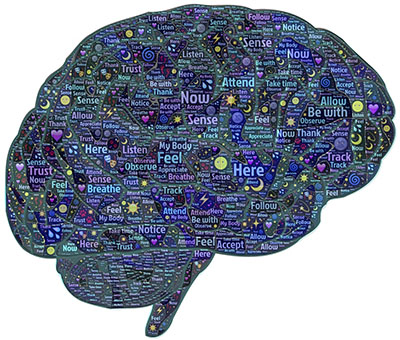Mindfulness
The best way to capture moments is to pay attention. This is how we cultivate mindfulness. Mindfulness means being awake. It means knowing what you are doing.
– Jon Kabat-Zinn
The Movement of Mindfulness
The movement of mindfulness has made its way to education and into schools worldwide. What exactly is mindfulness, and what true benefits does it have to our students? Is it just the new buzzword in education, or is mindfulness around to stay? Those who have learned to zero in on the present moment are finding that, although sometimes difficult, being mindful can help both children and adults achieve more of an overall life balance.
Mindfulness is truly needed in education for many reasons, and educators are seeing the direct benefit to their students. According to mindfulschools.org, “Toxic stress impairs attention, emotion, and mood regulation, sleep, and learning readiness daily in American classrooms.” When students and educators practice “taking a moment,” pay attention to their breathing patterns, and visualize positive outcomes, their stress levels are significantly reduced.

“A moment-by-moment awareness of our thoughts, emotions, sensations, and surrounding environment,” is how mindfulschools.org defines mindfulness. In conjunction with mindfulness, they explain heartfulness as “the intentional nurturing of a positive mind such as kindness and compassion.” When mindfulness and heartfulness are practiced, the end result is a calmer and more productive person.
An article that appeared in The Atlantic entitled, “When Mindfulness Meets the Classroom,” explains mindfulness to be a secular philosophy adapted from Buddhist meditation traditions that have only recently come to our attention. However, the research is mostly in support of teaching at least some mindfulness techniques to children and adults alike in order to “improve attention, reduce stress, have better emotional regulation, and an improved capacity for compassion and empathy.” Brain scans are also supporting these findings.
What other ways can mindfulness help children? According to The Atlantic article, mindfulness is the “foundation of good character, resilience, and long-term life fulfillment. It is this part of the mind that mindfulness seeks to address.”
Intrigued? Interested? Give a mindfulness exercise a try. Here are a few from pocketmindfulness.com:
Mindful Breathing
This exercise can be done standing up or sitting down, and can pretty much be done anywhere at any time. All you have to do is be still and focus on your breath for just one minute.
Start by breathing in and out slowly. One cycle should last for approximately six seconds. Breathe in through your nose and out through your mouth, letting your breath flow effortlessly in and out of your body.
Let go of your thoughts for a minute. Let go of the things you have to do later today or pending projects that need your attention. Simply let yourself be still for one minute.
Purposefully watch your breath, focusing your senses on its pathway as it enters your body and fills you with life, and then watch it work its way up and out of your mouth as its energy dissipates into the atmosphere.
Mindful Observation
This exercise is simple but incredibly powerful. It is designed to connect us with the beauty of the natural environment, something that is easily missed when we are rushing around in the car or hopping on and off trains on the way to work.
Choose a natural object from within your immediate environment and focus on watching it for a minute or two. This could be a flower or an insect, or even the clouds or the moon.
Don’t do anything except notice the thing you are looking at. Simply relax into a harmony for as long as your concentration allows. Look at it as if you are seeing it for the first time. Visually explore every aspect of its formation. Allow yourself to be consumed by its presence. Allow yourself to connect with its energy and its role and purpose in the natural world.
How are schools incorporating mindfulness? Some schools are making a deliberate effort to educate teachers, students, and parents about mindfulness. At Westminster School, a recently built-in “flex” period allows teachers to instruct students on the benefit of living in the present moment, breathing, meditating, and being still. A focus has been placed on living a harmonious and balanced life, and students are being discouraged from picking up screens as their go-to habit. Classes in the arts are all about mindfulness, as painting, learning to read music, singing, drawing, and acting are all activities in which students must slow down and focus their attention and energy. Daily recess and physical education, which are becoming obsolete in some schools, help relieve stress and tension, which leads to a calmer, happier child–and one who is better able to be attentive and cooperative in the classroom.
It will be interesting to see how influential the mindfulness movement will become in education. As the world grows busier and more demanding of individuals, it seems logical that people will seek out practices that can help them relieve stress and become more present, more balanced, and more joyful. With more and more children learning the concept and practice of mindfulness, it can only lead to more adults finding that balance that will lead to a better life.

